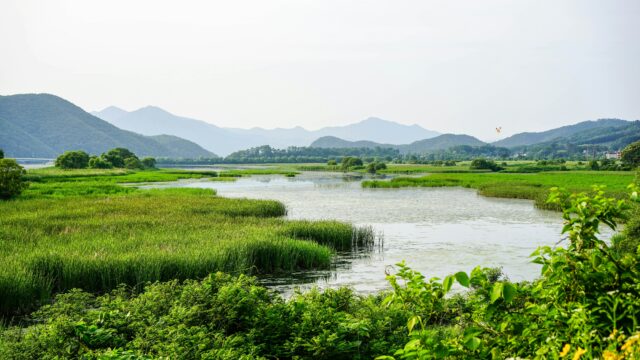
We are used to reading fluid and fluctuating news on water. We may have too much or too little rain, crops desiccate or they rot, or we hear about severe drought, or floods leading to widespread famine, displacement or economic damage. Everybody wants water when it is scarce (but they usually don’t pay more in times of scarcity) and the costs of protecting citizens against its adverse effects are externalised to the public purse. With year to year, or even week to week, fluctuations in the status of such a precious natural resource, what would be the perfect place for water within a Green Economy? How could we know when we have reached an optimal and sustainable management of our available water? With so many environmental and social externalities associated with every drop of water, how much should water cost the user?
Water flows the lengths of rivers, infiltrates to groundwater, evaporates from vegetation and the sea and is rarely captured in space and time where it can be clearly owned by individuals or collectives (with the possible exception of reservoirs). Pinning down what volumes are used for productive industrial or agricultural use, drinking water or ecosystem services and how much value to attribute to each within such a flowing and interconnected system has exercised the minds of many scientists and policy makers over the years.
Efficiency: Market economists have argued that water that is correctly priced will necessarily be allocated to the most economically efficient use.
But the idea of simply optimising economic efficiency ignores the inclusion element, and falls foul, for example, of the UN recognised human right to water or the commitment to conserve landscapes or ecosystem services that accrue as public goods, especially strong in developed countries.
In many parts of the world, water is seen as a gift from God, and it is an upstream struggle to convince people to pay for drinking water, even if it is presented as paying for a service, not the resource itself. “Water is free” is often a rallying cry. How economically optimal is that?
Equity: In most developing countries, water is owned and allocated by the State, and equity and access for all is still a major factor in deciding how it is used. While an industrial maize agribusiness may use the water more efficiently, and generate more crop per drop, it is a difficult case to make that their smallholder neighbours should demonstrate the same kinds of efficiencies. It seems indefensible to, for example, push the big guys to be “optimal” by charging market prices for water yet leave the little guys to “waste” a precious resource. In any case the 70% of water used in agriculture worldwide is not usually “owned” by a farmer for anything other than his own use on his own land. Water is expensive to transport, and it can rarely be sold on to others to make more optimal economic use of it. Raising the price of water for all and putting small farmers out of business is not usually a preferred policy option.
Ecosystem services: In its purest current form, optimising the economic returns of water at a basin scale is taking place in the Murray Darling basin in Australia which has been subject to recent droughts, focussing the minds of water managers and policy makers around optimising the use of increasingly scarce water. Permanent and temporary permits for irrigation use have been allocated to irrigators and can be sold on the open market to the highest bidder. To ensure environmental services, a government agency buys and sells water permits on the market at market rates and this water is left in the river. This means that instead of a government regulator fixing water abstraction at say 60% of mean river flow, the taxpayer buys permits in the market, like any other user, to meet societal demands for biodiversity maintenance and ecosystem services. In the USA, NGOs and state agencies are also buying out, or leasing, water from historical rights holders and then leaving the water ‘instream’ for fisheries maintenance. Prices are negotiated with holders and purchase prices within a catchment and costs per cubic metre (or in this case, per acre-foot) may fluctuate by a factor of 7, reflecting the unique opportunity costs of water for each individual situation and user within the basin.
In developed economies, water will rarely escape the controlling hands of the regulators as they seek to balance multiple societal rights and competing demands for drinking, industrial use, agriculture, navigation and environmental services, while ensuring overall water quality within the river system. Economic optimisation is rare (but growing) and most water is allocated by government, rather than through a market. In developing countries a demand for empowerment and equity between users, rather than strict economic optimisation, predominates. Water is one natural commodity that will not easily be “optimised” by the markets any time soon. But efforts within developing countries to achieve equity in water access and use reveal a wider range of real, human values attached to water; and that could prove useful in informing notions of a green economy that work for all.
Jamie Skinner
Photo by Patrick Hendry on Unsplash


